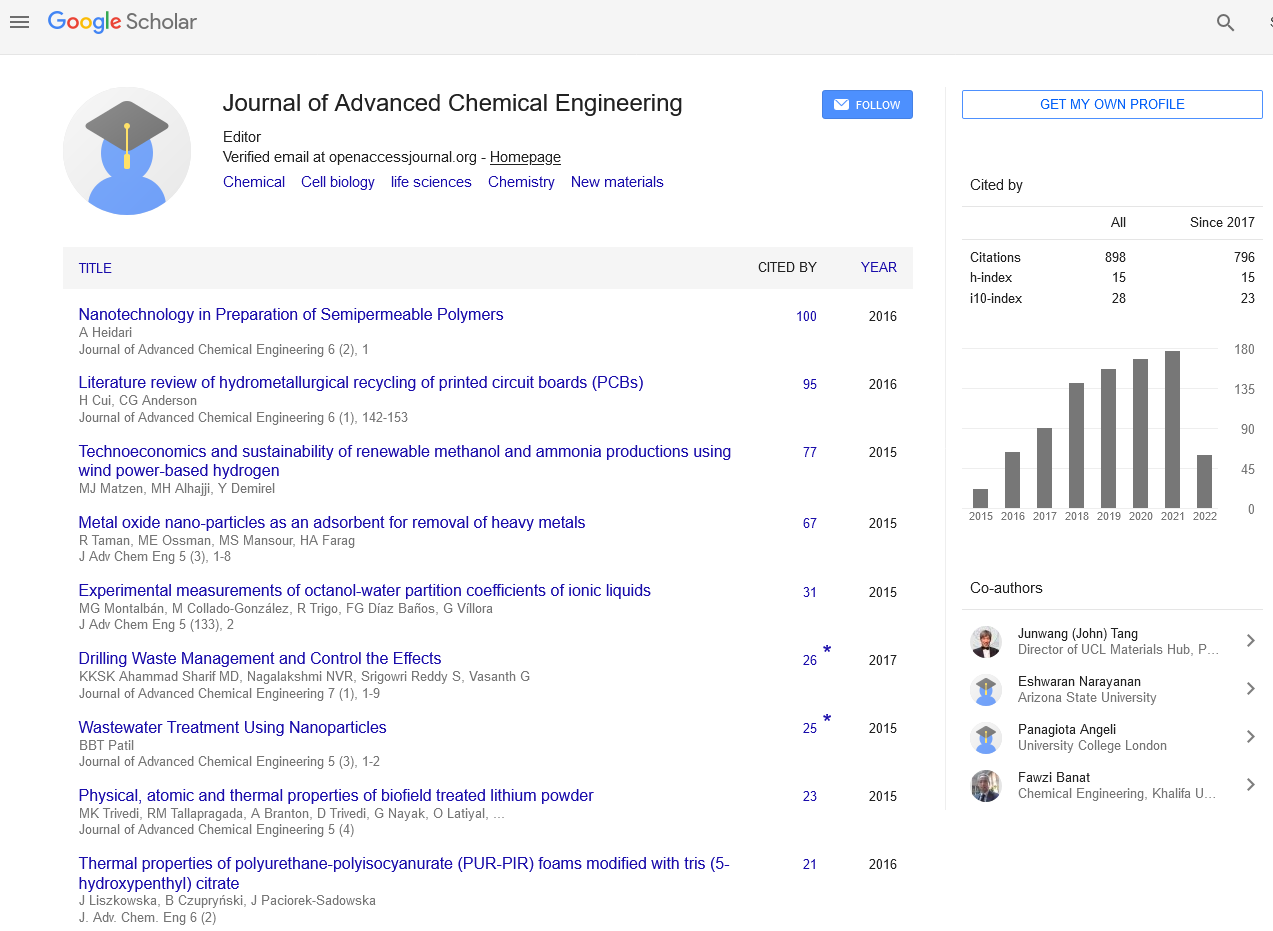Indexed In
- Open J Gate
- Genamics JournalSeek
- Smithers Rapra
- RefSeek
- Directory of Research Journal Indexing (DRJI)
- Hamdard University
- EBSCO A-Z
- OCLC- WorldCat
- Scholarsteer
- Publons
- Geneva Foundation for Medical Education and Research
- Google Scholar
Useful Links
Share This Page
Journal Flyer

Open Access Journals
- Agri and Aquaculture
- Biochemistry
- Bioinformatics & Systems Biology
- Business & Management
- Chemistry
- Clinical Sciences
- Engineering
- Food & Nutrition
- General Science
- Genetics & Molecular Biology
- Immunology & Microbiology
- Medical Sciences
- Neuroscience & Psychology
- Nursing & Health Care
- Pharmaceutical Sciences
Abstract
Using Slow Sand Filtration System with Activated Charcoal Layer to Treat Salon Waste Water in a Selected Community in Cape Coast, Ghana
Isaac Mbir Bryant and Roberta Tetteh-Narh
Discharge of untreated salon waste water into the surrounding environment in Ghana remains so probably because of poor knowledge of Ghanaians about treated waste water and its reuse as well as ignorance of waste water to ground water pollution. In Ghana, there is little or no knowledge on waste water treatment technology for salon waste water. In addition, a greater proportion of Ghanaians have no knowledge regarding reusability potentials of treated waste water. Thus, this study assessed the efficiency of a simple slow sand filtration system integrated with activated charcoal layer for salon waste water treatment. The study also assessed the perception of some selected Ghanaians in Cape Coast on reuse of treated salon waste water. For sixteen weeks, salon waste water collected from five different beauty salons in Amamoma was homogenized and treated. Selected parameters of both influent and effluent were analyzed. The percentage removals of some selected heavy metals present in the treated waste water (Effluent) show Copper 32.836 ± 7.013%, Cadmium 59.259 ± 8.006%, Zinc 83.333 ± 6.881%, Iron 38.095 ± 2.002%, Lead 100.000 ± 12.939% and Arsenic 100.000 ± 11.573%. pH 9.877 ± 1.107%, Conductivity 6.250 ± 0.819%, Total Dissolved Solids 5.810 ± 0.629%, Biological Oxygen Demand 21.780 ± 1.578%, Turbidity 93.798 ± 6.073%, Nitrates-nitrogen 67.727 ± 5.759%, Phosphate-phosphorus 67.614 ± 3.264%, Ammonia-Nitrogen 79.249 ± 8.311%, Total Suspended Solids 94.043 ± 0.948% and Chemical Oxygen Demand 84.487 ± 2.823%. All effluent parameters conformed to EPA Ghana standards for effluent discharge except turbidity, N-NOâ��, conductivity, TSS, COD and N-NHâ��. The results proved that treatment of salon waste water using an integration of slow sand filtration system and activated charcoal layer could be adopted as domestic waste water treatment technology especially in developing countries like Ghana since the percentage removal for four of the treated heavy metals (Cadmium, Zinc, Iron and Arsenic) were around 60% and above except for Iron and Copper which were below 40%.


